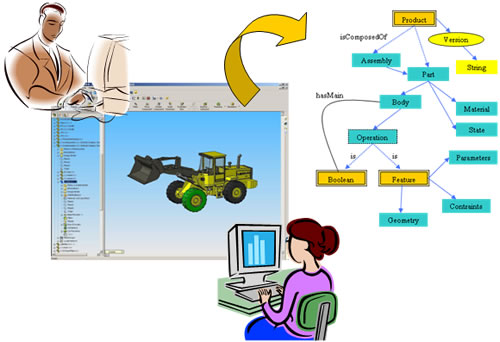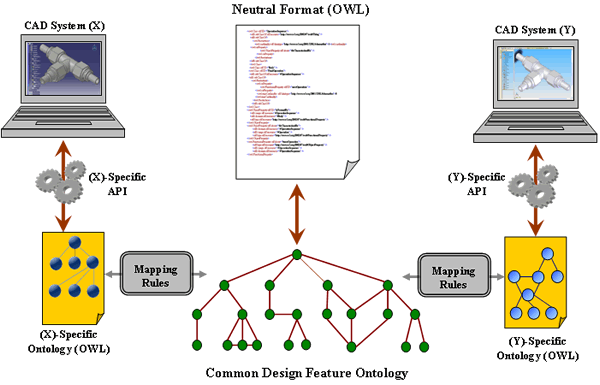- Join our Team
- Resources
-
Account
- Cart
- EN FR
The butterfly effect !

October 01, 06
The idea that a file exchange and conversion process could extract and manage not just geometrical data but all the information needed to develop a product used to be a pipe dream. Now it is a reality.
Concurrent engineering and the acceleration of the whole product development process have, more than ever, created the need to maintain the history of how a model was built, including the functional data and the constraints applied, to ensure that the product continues to reflect the designer's original intent. Datakit set out to address the need for a feature-based CAD data exchange solution, and the result is the commercialisation of a feature-based "Catia V5 to SolidWorks" converter.
Launched at the SolidWorks World 2006 show in Las Vegas, it has recently been followed up by a new release that converts twelve new Catia V5 features into SolidWorks. These are Multi-Pad, Multi-Pocket, Multi-sections, SolidRemoved, Multi-sections, SolidScaling, Thickness, Thick Surface, Thread/Tap Face-Face Fillet, Tri-tangent Fillet, Remove Face, Replace Face
Tests have shown that all these data types are successfully transferred.
Samer Abdul Ghafour, a post-graduate student who has been working at Datakit as part of his thesis programme, drew on his experience in the development of this feature-based CAD interface as a platform to explore the idea of a universal feature-conversion method. At the recent symposium dedicated to concurrent engineering in Antibes in the south of France, and with the backing of his tutors at France's National Scientific Research Centre, he presented a specific ontology for this type of data exchange. A read through the conference proceedings gives a good insight into his approach, the advantages of the method, the tools used to represent the models, all the related operations, and how the different elements all fit together.
His presentation highlighted the main differences between the two possible approaches to producing a feature-based model: a "feature-recognition" approach and a "feature-based design" approach, and demonstrated the value of the latter solution for ensuring complete integrity of the semantics of the data. To address the difficulties encountered when matching features in different CAD software, the most widely used are defined in a neutral format and define their ontology. This procedure ensures that the link between a model's features and its lowest-level entities is maintained, along with the geometric and topological data. This way, the CAD model can be edited in the target environment just as it was actually created in the original software.

The study clearly demonstrates that ontology is a good approach to explicitly defining, capturing, interpreting, re-using and sharing the semantic data for a product in a heterogeneous environment. The method is available and can easily be extended to different applications. It clearly defines the design modes, the properties of the operations carried out and all the interactions that exist between these operations.
For Francis Cadin, Datakit CEO, "the key to extending feature-based data exchange to all CAD software is to identify all the features. Sure, this will take time, but the potential savings are out there and, provided the quality of data transfer between CAD and CAM is improved, they are so big that they could really drive people to adopt this type of data exchange. We have the procedure to do the job and we are ready to take up the challenge."